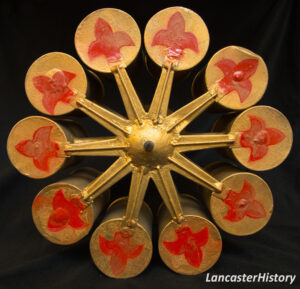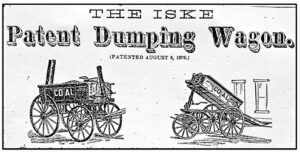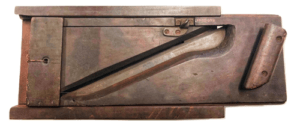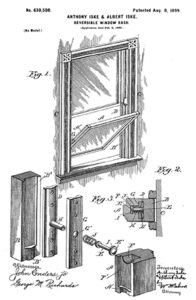The Edison of Lancaster, PA

Anthony Iske came to Lancaster, Pennsylvania by accident.
A cabinet maker in the German area of France, he was hired to build a church altar in Lancaster, New York. At the train station in New York City, the twenty-two-year-old immigrant was sold a ticket to the wrong town, Lancaster, Pennsylvania. However, Iske found a new German neighborhood with a new church that also needed an altar, so he stayed.
Iske was not only a craftsman in wood. He was an inventor too. The period between the Civil War and the early twentieth century was a golden age for inventors, and Anthony Iske was in his element. Iske was granted more than 200 patents for an amazing range of useful items, large and small. From an egg holder to an elevator, a flower stand to a fire escape, a harness buckle to a hospital bed, the number and variety of his inventions are the reason he was called the “Edison of Lancaster.”

Like the heat motor, some of Iske’s inventions are obsolete today, but many others are recognizable as ancestors of their current-day versions. His dump truck, or “Patent Dumping Wagon” (1876), was a horse-drawn vehicle that could deliver coal directly down the chute to your cellar. It looks remarkably similar to today’s version.

His deli meat slicer (1882) looks familiar, too. As a woodworker, Iske was familiar with hand planes and perhaps he applied the same idea to the first patented meat slicer. It is hand operated and made of wood, but it can be adjusted for thick or thin slices, just like now.

The “Reversible Window Sash” that he patented along with his son, Albert, in 1899 allowed windows to be tipped in for cleaning. Look familiar?
Anthony Iske had a reputation as an honest businessman, but he was financially unsuccessful. Time and again he went through court cases over financial ventures and patent ownership. More than once his property was sold to pay his debts. But his legacy as a talented and versatile inventor can be seen around us today.
More information on Anthony Iske’s life and inventions can be found in the current issue, Vol. 121, No. 2/3 Fall/Winter 2020/2021, of LancasterHistory’s Journal of Lancaster County’s Historical Society. This issue is available for purchase at our Museum Store. A subscription to the Journal is also a benefit of membership! Learn how you can become a member here.
From Archives Blog